Drones in National Parks: What Every Drone Pilot Needs to Know
BY Zacc Dukowitz
4 January 2024When you think of drones in national parks, you might think of the opportunity to capture amazing aerial shots of some of the most beautiful places in the world.
But unfortunately, flying drones in national parks is not allowed.
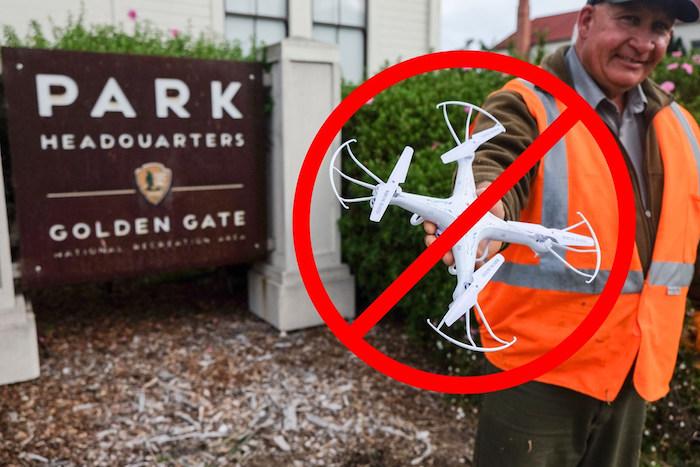
Photo credit: NPS
Since June of 2014, the U.S. National Park Service (NPS) has had a ban in place on the use of drones in national parks.
This ban applies to the 417 national parks, 23 trails, and 60 rivers that the NPS manages. The ban was issued as Policy Memorandum 14-05 on June 16, 2014 and states:
Launching, landing, or operating an unmanned aircraft from or on lands and waters administered by the National Park Service within the boundaries of [insert name of park] is prohibited except as approved in writing by the superintendent.
– The NPS
This memorandum was issued under federal law 36 CFR § 1.5, which covers closures and public use limits for national parks.
It appears that the highlighted text in the image below is the section of the law that the NPS used to make a legal justification of the ban covered in the memorandum:

From a legal perspective, the FAA is the only federal authority that has jurisdiction over the national airspace. However, other government entities continue to make up their own drone regulations in spite of the FAA’s sole authority over the airspace.
The FAA has issued their own restrictions over certain NPS sites such as Mount Rushmore and these other U.S. landmarks.
What If I’m an FAA-Certified Drone Pilot?
The ban on drones in national parks is a blanket prohibition that applies to both recreational and commercial drone pilots, with no distinction made between the two.
What Exactly Does the Ban Cover?
This [ban] applies to the launching, landing, and operation of unmanned aircraft on lands and waters administered by the NPS.
The ban on drones in national parks includes:
- Historic sites
- Walking trails
- Biking trails
- Seashores
- Monuments
- Battlefields
- Seashores
- Rivers
- As well as most other areas managed by the NPS
In addition to National Parks, the use of drones is also banned in Wilderness Areas. If you want to learn about outdoor areas in the U.S. where you can fly your drone jump down to our section on alternative flying locations.
What Happens If I Violate the Drone Ban?
Violating the ban on drones in national parks can lead to up to six months in prison and a fine of up to $5,000.
Several of these fines have been issued (although none for the maximum possible amount of $5K). We go over instances of rogue drones in national parks and the fines associated with them in the section below that covers the history of the NPS ban.
This article contains a lot of information, so please feel free to jump around if you’d like:
- Why Is There a Ban on Drones in National Parks?
- The History Behind the Ban on Drones in National Parks
- Are There Any Exceptions to the Ban on Drones in National Parks?
Why Is there a Ban on Drones in National Parks?
Put simply, the NPS banned drones in national parks because they can be disturbing to both people and to wildlife.
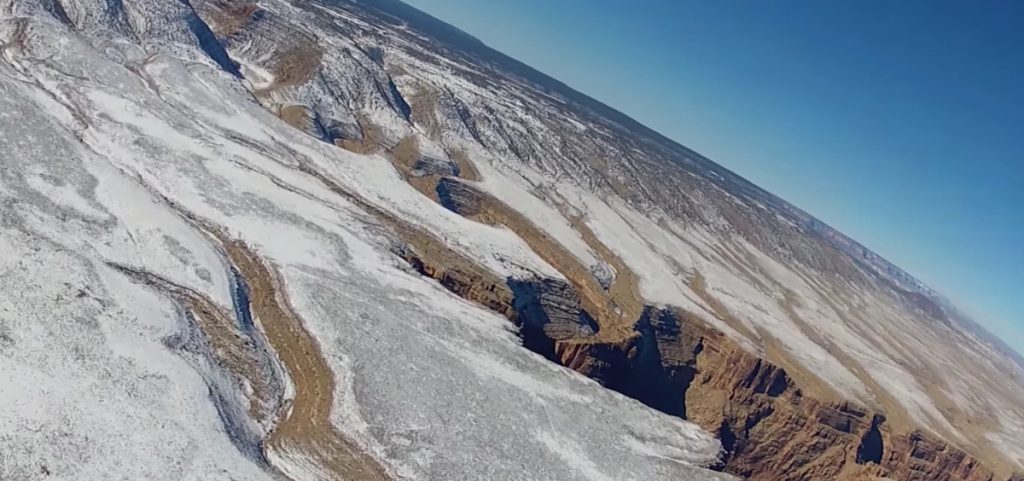
A drone shot taken over the Grand Canyon before the ban
The drone ban the NPS issued in 2014 came after several individual bans had been made at various national parks throughout the U.S.
In some cases, these individual bans were reactive—someone had flown a drone in the park in an irresponsible, intrusive manner, and park administration had decided that the easiest policy was to ban all drones going forward.
[The drone ban stems from] serious concerns about the negative impact that flying unmanned aircraft is having in parks.
– Jonathan Jarvis, Director of the National Park Service
As far as people go, the NPS seems to have been worried that the noise and visual distraction of a drone would negatively impact the experience of visitors who were trying to commune with nature.
While you might be able to argue that drone pilots could just avoid populated areas to address this complaint, that would still leave us with the concerns the NPS had about the negative impact drones were having on animals and on the environment at the time of the ban.
In one of the most well-documented incidents of a drone interfering with wildlife, a drone was seen separating several young bighorn sheep from adults in a herd at Zion National Park. This was alarming because sheep who lose their parents can die easily, and it seemed the drone pilot either didn’t notice or didn’t care about what had happened.
Add to these concerns the fact that drones were just starting to become mainstream in 2014 and you have the perfect storm for a blanket ban to be issued.
The History Behind the Ban on Drones in National Parks
In 2011, when the drone industry was still in its infancy, Swiss drone pilot Raphael Pirker was stopped by park rangers while flying a small Styrofoam drone at Grand Canyon National Park.
The rangers demanded he ground the drone. Once he did, they seized the drone’s memory card and issued a $325 ticket.
The ticket was for violating a federal code that prohibits “delivery or retrieving a person or object by parachute, helicopter, or other airborne means, except in emergencies involving public safety or serious property loss, or pursuant to the terms and conditions of a permit.”
Obviously, this statute wasn’t made with drones in mind (drones as we know them today didn’t exist when it was written) and its use for the ticket was revealing about the legislative gap when it came to how to regulate drone use, whether in a National Park or elsewhere.
Over the next few years, as consumer drones grew in popularity, incidents like this one became more and more commonplace and parks began prohibiting the use of drones.
In May of 2014, Yosemite National Park issued a ban on drone use anywhere in the park. Shortly afterward other national parks, including Zion National Park and Great Smoky Mountains National Park, followed suit.
And the next month the NPS issued a blanket ban, prohibiting the use of drones in all national parks across the U.S.
Some Context—Public Perception of Drones and the Commercial Drone Ban
In 2007, the FAA banned drone use for commercial operations, largely because they just didn’t know how to regulate them—the ban was basically a way of putting off the creation of commercial drone legislation to some later date, which, as time passed, just never seemed to come.
By 2014, when the NPS banned drones, there was still no framework in existence to regulate drone use for commercial purposes (or really for hobbyist uses either, from a practical perspective).
This meant that agencies like the NPS may have been inclined to see drones the same way much of the public saw them at the time—noisy, annoying, and potential instruments for invading privacy—and not as tools for certain jobs, like aerial photography, or research, which could have a valid place in the NPS universe if properly regulated.
In this context, it was easy to issue a blanket ban. With no legislative framework, and with the drone industry still in its nascency, there was no need for nuance or for creating a real path to pursuing permits or exceptions to the rule.
Drones were bad and they were out—it was that simple.
How the NPS Ban Intersects with the Creation of Commercial Drone Regulations
Remember Raphael Pirker, the Swiss drone pilot who got busted by park rangers at Grand Canyon National Park in 2011? Well, he ended up becoming an unlikely catalyst in the push to create commercial drone legislation.
In the fall of 2013, Pirker was working—illegally, we should note, since all commercial done operations were illegal at this time—as a commercial drone pilot taking aerial shots of the University of Virginia. By this point, seven years after the FAA’s commercial drone ban had been issued, there were several “underground” commercial drone operators who were willing to risk breaking the law to do work with their drones.
When the FAA learned of the video Pirker had made with his aerial footage they issued a $10,000 fine for illegally operating a drone for commercial purposes, and for flying it “in a careless or reckless manner.”
Here’s the video that got Pirker the $10K fine
But Pirker took the FAA to court, arguing that their 2007 ban on drones was invalid because the FAA failed to hold public hearings before issuing the rule.
The result?
Pirker won. In the spring of 2014, a judge dismissed the FAA’s case against Pirker.
And the judge didn’t stop there. Addressing Pirker’s claim that the FAA’s ban on commercial drone operations was illegal, the judge declared commercial drone operations to in fact be legal.
There are no laws against flying a drone commercially.
– Patrick Geraghty, Judge with the National Transportation Safety Board
The FAA was already working on its Part 107 rules, which would establish a true regulatory framework for commercial drone operations. But this case, brought by one of the first drone pilots to get in trouble for flying in a national park, certainly pushed them to get those rules out.
Rogue Drone Incidents at National Parks
Both before and after the ban on drones in national parks was issued, rogue drones have created some serious problems at National Parks.
Here are some of the most prominent incidents:
- In September of 2013, a drone landed on Lincoln’s head at Mount Rushmore.
- In May of 2014, a drone was seen separating several juvenile bighorn sheep from adults in the herd at Zion National Park.
- In June of 2014, a man posted a drone video on YouTube that he’d taken in Denali National Park in Alaska. Park personnel said the flight disrupted a local bird population.
- In August of 2014, a Dutch tourist crashed a drone into the Grand Prismatic Spring geyser at Yellowstone National Park. The drone was never recovered, creating concerns that its presence might impact the spring’s thermal waters or chemical balance. The tourist was fined $3,200.
- In September of 2014, a German tourist crashed his drone into Yellowstone lake and was issued a $1,600 fine. He was also banned from the park for one year.
- In August of 2017, a rogue drone in Yellowstone forced a helicopter used by the park to land in order to avoid a potential collision.
- In the spring of 2019, drone company Skydio used footage shot in Yellowstone National Park to promote its autonomous selfie drone.
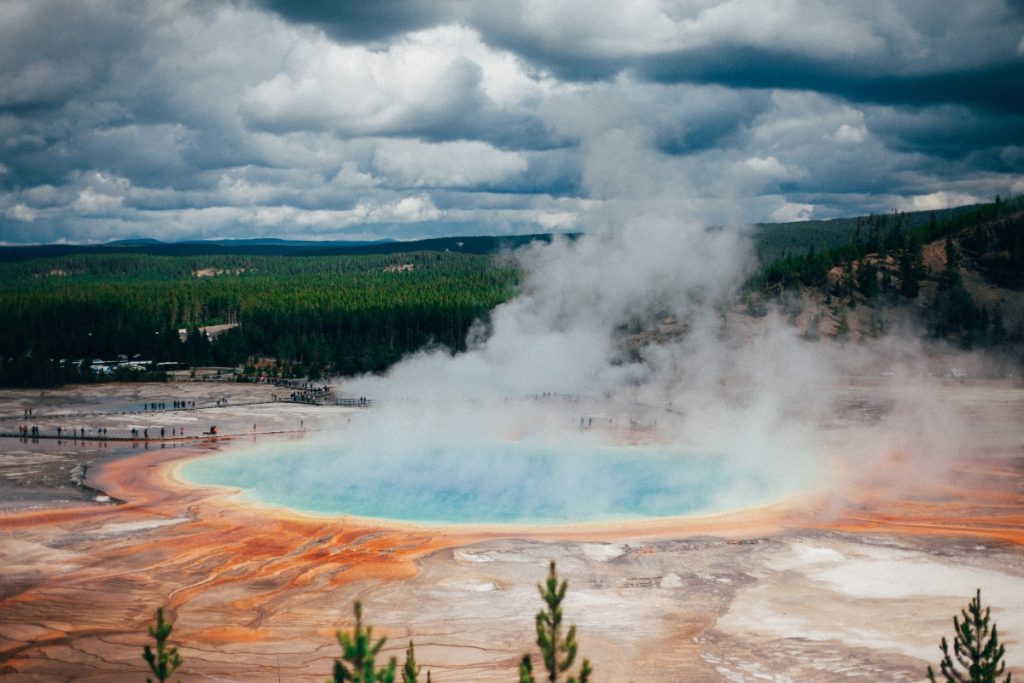

A non-drone shot of the Grand Prismatic Spring (Image source)
Are There Any Exceptions to the Ban on Drones in National Parks?
The NPS ban on drones in national parks does allow for a Special Use Permit for uses like search and rescue, research, and fire safety. However, in practice these permits seem almost impossible to obtain.
Special Permits Issued
We haven’t been able to find a full list of the Special Use Permits the NPS has issued but we do know of these two instances in which they were granted:
Marsh-Billings-Rockefeller National Historical Park
In August of 2015, a drone pilot captured aerial photographs of the Marsh-Billings-Rockefeller National Historical Park in Vermont with NPS permission. The purpose of the project was to create a large illustrated map of the park to display to visitors as they entered park grounds.
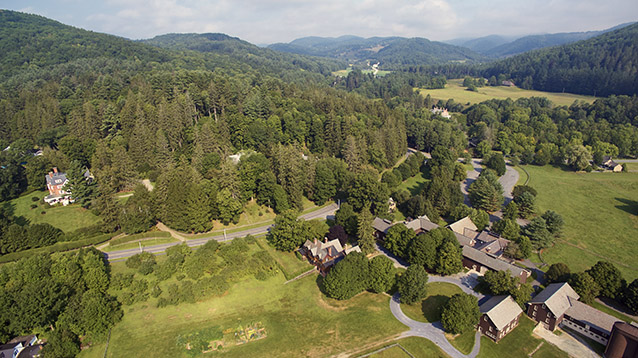

Photo credit: NPS
Great Sand Dunes National Park
In January of 2017, permission was granted for a drone to be used at Great Sand Dunes National Park in southern Colorado for the collection of aerial data to enable the creation of accurate geospatial maps of the sand dunes, as well as to provide researchers with high-quality data sets about the dunes.
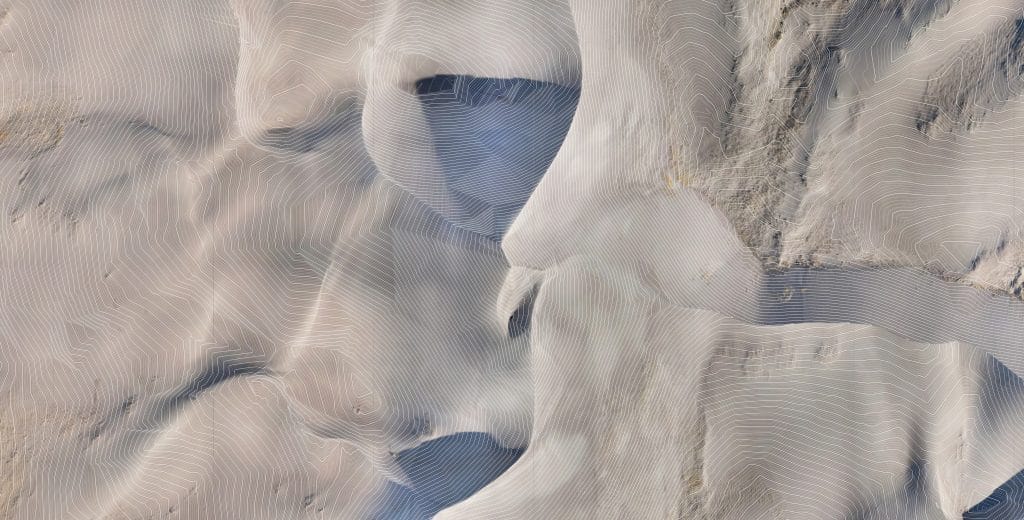

Image source
If you know of other Special Use Permits the NPS has issued we’d be grateful if you let us know by emailing support[at]uavcoach[dot]com).
Grand Canyon National Park’s Drone Fleet
Grand Canyon National Park has a fleet of drones that are used strictly for search and rescue operations.
The fleet was first created in 2016. In 2017, the fleet made headlines for finding two hikers who’d been swept away while attempting to cross a flooded creek. At that time it contained four UAS with six trained pilots.
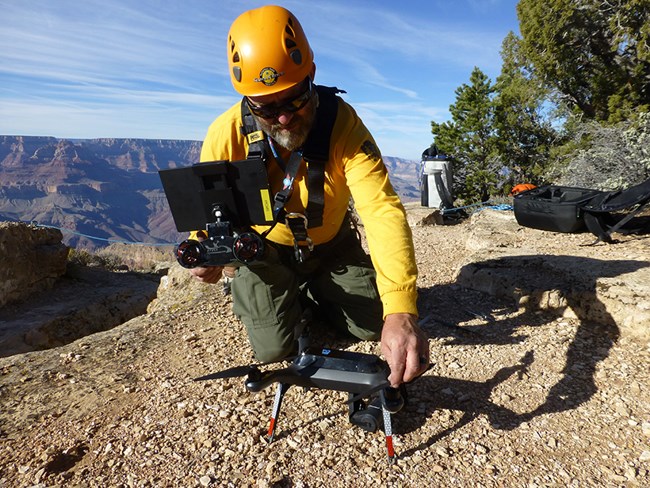

Photo credit: NPS
To our knowledge, Grand Canyon is the only national park that has a drone fleet.
Alternatives to Flying Drones in National Parks
Although drones are banned from national parks, here are some other beautiful outdoor areas where they are not strictly banned:
- National forests
- State parks
- Local parks
- BLM (Bureau of Land Management) land
Please note that this is just a general list of potential areas where flying could be allowed.
To make sure you’re compliant with the regulations in the specific area where you want to fly it’s important to look into the specific drone laws governing the area where you want to fly.
Here are some resources to help you get started with your drone law research:
- Master List of Drone Laws—drone law pages devoted to each state in the U.S.
- Where to Fly Your Drone—recommended places to fly listed by city and state for areas across the U.S.


